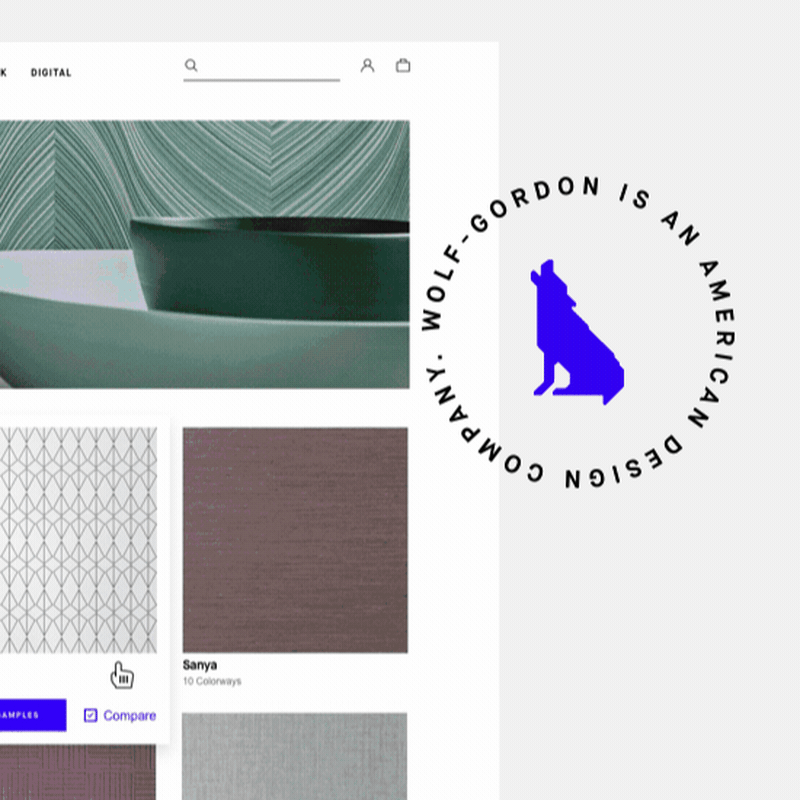Digital Marketing Trends in 2013 vs. 2023: A Decade of Transformation

The landscape of digital marketing looks completely different than it did in 2013. We published an article more than 10 years ago about the digital marketing trends that we were excited to watch unfold in the year 2013. Now a decade later, we wanted to revisit it to see how on target those trends were or how far we missed the mark.
Here is what we thought would revolutionize the digital space 10 years ago. Welcome to the twilight zone.
Video Will Get Bigger as a Medium:
“People aren’t getting any less lazy in 2013. Why read a blog post when the same information can be conveyed to you in a 30 second video? With streaming quality increasing and camera prices decreasing, in 2013 it will be easier than ever to produce and then distribute content.”
“Bigger” has to be the understatement of the decade. Video has become an integral part of our lives and is fully embedded in pretty much everything we do.
From tutorials to testimonials, short-form videos, and even search results, video content dominates the digital landscape. Marketers now prioritize video-first strategies to engage audiences across various platforms.
The advent of short form video on TikTok, Reels, and YouTube Shorts proves that this is no longer a “trend,” but as essential to marketers as email or SEO.
Inbound Marketing Will Grow within Brands and Businesses:
“The role of the content strategist will rise in conjunction. Strategic content will drive inbound marketing efforts and increase the need for full-time employees to curate that content.”
The value of content has skyrocketed in the past decade, aligning with the growing power of social media, influencers, and platforms like TikTok, Instagram, and YouTube. Content marketing is no longer just about writing educational blog articles to generate traffic and leads.
Blogging remains essential: in 2023 77% of internet users read at least one company blog and 80% of companies with blogs report a positive ROI from them. People are still completing more and more of the sales cycle before deciding on a particular brand or product, so these digital voices we call blogs need to be louder than ever.
International Will Be the New Domestic, for Many:
“The internet has made our very large world navigable from the comfort of our couches. The same will be said about ecommerce in 2013. With exciting young companies such as FiftyOne making American brands easily attainable all over the world, the term “foreign markets” might begin to seem a bit dated in 2013. The idea of thinking global and acting local will be turned on its side with businesses thinking local and acting global.”
With the exponential growth of international ecommerce markets, brands can now easily expand their reach across borders. Marketplaces like Amazon, eBay, Rakuten, and AliExpress have played a significant role in enabling international commerce. Amazon netted almost 7x their revenue with $75 billion in 2013 vs $514 billion in 2022.
Despite the meteoric trajectory of global ecommerce, there is also a rising trend of shopping locally and sustainably as consumers prioritize supporting local businesses and communities. The global pandemic which initially increased ecommerce sales also gave a boost to the local small businesses that survived. According to a Local Business Consumer Sentiment Study by Red Egg Marketing, 82% of those surveyed say they’d spend more to support local businesses after the pandemic.
Experiential and Brand Experiences Will Be the New Website:
“The standard HTML homepage will increasingly be blown out of the water by interactive elements and experiences that surpass digital.”
This prediction holds true as brands strive to create immersive and engaging experiences to captivate their audiences. From interactive websites to virtual reality (VR) and augmented reality (AR) experiences, brands now understand the importance of providing memorable encounters that go beyond traditional web pages.
Mobile Will Finally Start to Be a Real Concern for Marketers:
“This will force us to be better at delivering better mobile experiences (responsive, adaptive, context driven): This 2013 prediction is nearing the ranking of “Broken Record” in the marketing world for how often it is discussed. The conversation keeps occurring because of the astronomical amount of data pointing towards mobile dominance in 2013. Morgan Stanley is predicting that there will be more mobile devices (tablets and phones) accessing the internet than traditional computers (laptops and desktops) in 2013 for the first time EVER.”
With more people relying on smartphones and spending a significant amount of time on mobile devices, it’s safe to say that marketers have recognized the importance of optimizing their content and experiences for mobile users. Mobile now takes precedence in website design and search engine optimization (SEO).
The Term “Big Data” Will Be Abused as Agencies Promise Magic Insights Based on Analytics:
“Data regarding demographics and reach will be the driving factor behind marketing decisions in every area. More media outlets will hire more statisticians, developers and computer scientists following the wild success of Nate Silver’s election coverage for the NY Times. Punditry will suffer at the hands of big, meaningful data.”
This prediction about the abundance of data and the challenges of accessing the right data has become a reality. So much so that since the 2016 election the industry had changed its tone on widespread data collection. Consumers have voiced concerns about who holds their information, and thus we’ve watched industry standards like 3rd party cookies get removed entirely.
Marketers still have access to vast amounts of data, but the focus has shifted on how this data is obtained and used. Advanced technologies like AI have simplified data processing, enabling marketers to make informed decisions based on meaningful data.
Long story short, we now have all the data we could ask for; the challenge is how to get the right data and use it effectively.
Brands as Platforms Will Be a Big Aspect of Many Brands’ Content Strategy:
“The past few years have seen a much bigger push for both content and innovation from brands. Brands that have pushed the envelope have consistently won both critical acclaim and increases in revenue. 2013 will show an increase in brands pushing the envelope in terms of product creation and new business units in an attempt to excite consumers.”
Another winner! Since we made that prediction, successful brands have pushed boundaries by developing innovative products and engaging content that captivates consumers. From a content perspective (as we mentioned earlier in prediction 2) the value of quality content has skyrocketed for brands. Additionally, demonstrating an ability to continuously bring new and innovative products to market can be a formula for success. SharkNinja is a perfect example of this, as it is routinely launching new products across all its lines every 8-10 months.
Brands Will Start Really Listening to Their Customers:
“And, thus, a new form of advertising will be born where the brands act as the facilitator for what the customers collectively agree they want. The importance of data and brand advocates as well as the amount of tools available will aid this trend.”
Whether developing products and services or marketing and advertising them, there has absolutely been a significant shift towards being more customer-centric.
Hand-in-hand with the overall rise of putting an emphasis on content development, consumers are now seeing more content on a daily basis than ever before. Consequently, users have developed an ability to tune out what is irrelevant noise. In order to reach those who do care or might care about what your brand has to say or offer, brands must develop content and messaging that is highly relevant to their target audiences. Customer research is required.
With content it’s about understanding what questions consumers are asking. For product development it’s about using research to understand what consumers desire or need. The emphasis brands are putting on social listening to inform their product and marketing strategies is significant and stands in stark contrast to the days of focusing on how many page followers or likes you have (aka how many people you can push your messaging on at once).
Smart brands are no longer focusing on the ROI of their social media and content but instead evaluating how well it can foster stronger relationships with their customers.
We Will See More Social Media Gurus:
“As social media grows in popularity, so too grows the number of 20 somethings who claim to be experts. What exactly qualifies one as an expert, or a “guru”, is up for interpretation so in 2013 you will see an even larger amount of people “interpreting” themselves that way.”
As social media continued to grow in popularity, the number of self-proclaimed social media gurus increased in 2013. This trend has evolved over the past decade, and these gurus have now been rebranded as “influencers.” The rise of the creator economy has made it necessary for brands to participate in social media trends to stay relevant.
And influencers, while cringey at times, have become a powerful and essential marketing tool for brands to reach their target audiences, build trust, and drive engagement. The latest data shows that 1 in 4 marketing departments are presently involved in some sort of influencer program. The proof is in the pudding – Influencers are providing the second highest ROI of any other marketing trend in 2023.
Social Media Agencies of Record Will Grow:
“The rationale will be a bigger need for social CRM support and influencer programs. As the importance of social media grows, the need for experts in the field will become equally important. No gurus here.”
With the increasing importance of social media for building relationships with customers, the need for community management and influencer programs has grown. Social media agencies have become essential for brands to navigate and leverage the power of social media effectively.
In the past, social media was just a small part of the services provided by agencies. However, the rise of social media’s significance has led to the emergence of creative agencies dedicated to building social media content strategies.
For example, Movers & Shakers built its reputation on being one of the first agencies on TikTok in 2019. After countless viral TikTok campaigns for the brands they serve, Movers & Shakers established itself as a thought leader on what does and doesn’t work on the platform and across social media.
Pinterest Will Only Get Bigger
“Clearly written in the Pinterest mission statement, it says: “There is always more room for cute cupcake recipes and shirtless Jake Gyllenhal pictures”. We kid, it doesn’t say that (but it should). For all of the potential knocks against Pinterest it is still a beautifully designed platform and concept that has miles to go before it sleeps (see: dies like friendster and myspace). Brands are currently struggling to use it for marketing purposes already without an available public API. Once a public API is released to developers in the coming year, the possibilities are endless.”
Since 2013, Pinterest has gone public (in 2019) and found its niche as a platform for food, interior design, DIY projects, and event planning. It has become a go-to platform for inspiration and organization, particularly among women as 76.2% of Pinterest users are female according to Statisa.
Pinterest’s beautifully designed concept has contributed to its longevity, and with the introduction of a public API for developers, the platform’s marketing potential will expand further. Like Instagram, Pinterest has also made its platform shoppable, allowing brands to directly sell products to users.
Due to its visual nature, Pinterest does generate a substantial amount of web traffic and receives lots of referral traffic from other platforms like Youtube and LinkedIn.
However, despite all this we’re not sure Pinterest has had the explosive growth we were expecting ten years ago. As was the case back in 2013, Pinterest users are much more likely to use the app on a monthly basis than a daily basis.
So did Pinterest get bigger? Sure. Has it been the same explosive growth we’ve seen with Instagram? Not exactly.
Twitter Will Keep Stepping on Toes
“Twitter burned some bridges this year with moves like ending firehose access and cutting itself from Instagram.”
In 2013 Twitter was experiencing a steady decline, but it saw a resurgence in recent years particularly during the presidency of Donald Trump. Twitter became a popular platform for sharing updates from politicians, celebrities, and public figures. It provided a space for conversations and community engagement.
Twitter’s content has also changed – it used to be a go-to source for journalists or other curious types wanting to listen in on conversations between interesting people, celebrities, politicians, subject experts, etc. Twitter was where two sides met and were able to have conversations (even messy ones).
Since Elon Musk bought Twitter some people argue he has ripped away some of the things that made it great: like the free front row seats to debates amongst interesting people. Anyone willing to pay $8 a month will be able to shout over anyone else, diminishing the authenticity of the platform and promoting spammy or bot content over the things we really care about.
There is also controversy around banning vs unbanning accounts. Musk unbanned some inflammatory accounts when he took over, pleasing many but infuriating others as well.
Despite these challenges, Twitter remains an important platform for news, discussions, and connecting with influential individuals, and we are still waiting to see what other results Elon Musk’s involvement will bring.
All in all the digital marketing landscape has gone through its growing pains over the last decade, and it’s definitely a different world out there today than it was in 2013. Given our success rate last time, we’ll be sure to have our crystal balls ready and waiting and we will see you again in 2033.


